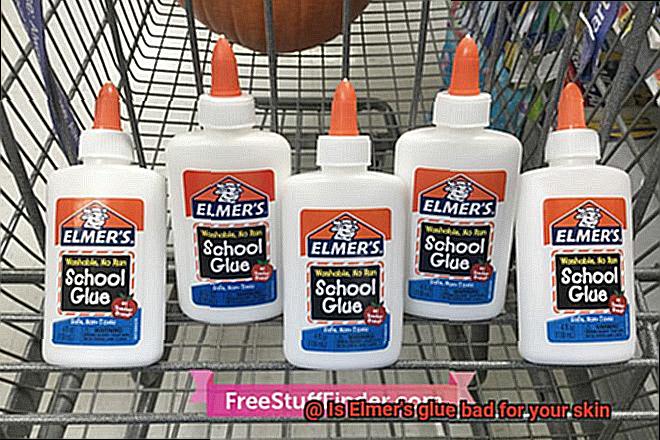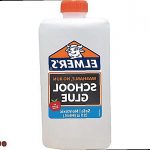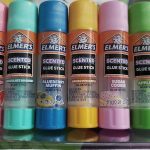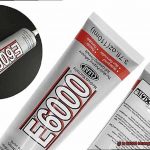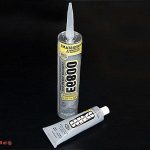We’ve all been there – struck by a wave of creativity and reaching for unconventional materials to fuel our artistic endeavors. Elmer’s glue, with its sticky prowess and versatility, often ends up on our skin during these moments of inspiration. But is it harmless? Lately, there has been growing concern about the potential risks of using Elmer’s glue on our delicate skin.
Before we dive in, let’s take a scientific perspective. Elmer’s glue, typically made from polyvinyl acetate (PVA), is specifically formulated for porous surfaces like paper or wood. However, our skin is an entirely different story – a living organ with unique properties that make us question the safety of this adhesive when applied topically.
While scientific research specifically focusing on Elmer’s glue and skin contact is limited, experts suggest that prolonged exposure to the glue may pose several risks. The presence of chemicals and additives in the glue could potentially cause irritation, allergic reactions, or even damage to the skin barrier.
Here’s another thing to consider: Elmer’s glue isn’t designed with your skin in mind. It lacks the special characteristics found in dedicated skincare products like pH balance or hypoallergenic properties. Consequently, using Elmer’s glue on your skin might throw off its natural balance, leading to unwanted effects.
Moreover, if you don’t properly remove the glue afterward, it can clog pores and increase the likelihood of breakouts and blemishes. And let’s not forget how uncomfortable it can be when you peel off dried glue – if not done carefully, it could harm your precious skin.
While Elmer’s glue may offer quick solutions for crafting fun, it’s important to exercise caution and be mindful when it comes to skin contact. Exploring safer alternatives and opting for products explicitly designed for use on your skin might be a smarter choice in the long run.
In future blog posts, we’ll delve deeper into the potential risks associated with Elmer’s glue on your skin. We’ll shed light on best practices for removing glue, suggest alternative adhesives, and share helpful tips to keep your skin healthy and protected during craft sessions. Stay tuned to learn more about this captivating topic.
Disclaimer: This article does not replace professional medical advice. If you have specific concerns regarding skin reactions or potential risks, it is recommended to consult with a healthcare professional or dermatologist.
What is the main ingredient in Elmer’s glue?
Contents
- 1 What is the main ingredient in Elmer’s glue?
- 2 How can Elmer’s glue affect your skin?
- 3 What are the symptoms of skin irritation from Elmer’s glue?
- 4 Who is most prone to developing a skin reaction from Elmer’s glue?
- 5 How to minimize the risk of skin irritation from Elmer’s glue?
- 6 What should you do if you get Elmer’s glue on your skin?
- 7 When should you seek medical attention for a skin reaction to Elmer’s glue?
- 8 What are some alternatives to using Elmer’s Glue for arts and crafts projects?
- 9 Conclusion
Elmer’s glue has long been a staple in the world of arts and crafts, captivating the imaginations of both young and old. But what exactly is the secret behind its stickiness? In this article, we will delve into the main ingredient in Elmer’s glue, polyvinyl acetate (PVA), and explore its remarkable properties. Prepare to be amazed.
The Main Ingredient: Polyvinyl Acetate (PVA)
At the heart of Elmer’s glue lies polyvinyl acetate, a synthetic polymer that brings this adhesive marvel to life. PVA is a water-based compound renowned for its sticky prowess, making it ideal for a myriad of applications. Whether you’re crafting a masterpiece or building a model, PVA is the key ingredient that holds everything together.
Why PVA Is an Excellent Choice:
One of the most remarkable aspects of Elmer’s glue is that it is non-toxic, ensuring your safety while you create your artistic wonders. PVA’s gentle nature makes it generally safe for use on your skin. However, individuals with sensitive skin should take extra precautions as prolonged exposure to Elmer’s glue may cause skin irritation.
Symptoms of Skin Irritation:
If you start experiencing redness, itching, or dryness after coming into contact with Elmer’s glue, it’s likely that your skin is having a reaction. It’s important to remember that everyone’s skin reacts differently, so some may be more susceptible to irritation than others.
Preventing Skin Irritation:
To keep your skin happy and healthy during your creative endeavors, it’s best to minimize direct contact between Elmer’s glue and your skin. If you accidentally get some glue on your skin, no need to panic. Simply wash it off promptly with soap and water. This will help remove any lingering residue and reduce the chances of irritation.
How can Elmer’s glue affect your skin?
Today, we’re going to explore the fascinating world of Elmer’s glue and its impact on your skin. While Elmer’s glue is a fantastic tool for bringing your artistic visions to life, it’s crucial to understand the potential effects it can have on your skin. So, let’s dive in.
Skin Irritation:
Elmer’s glue can cause irritation when it comes into contact with your skin. The polyvinyl acetate in the glue can lead to redness, itching, and inflammation. These uncomfortable symptoms are more common in individuals with sensitive skin or pre-existing conditions like eczema or dermatitis. Remember, the longer the exposure, the greater the chances of experiencing these reactions.
Allergic Reactions:
In some cases, Elmer’s glue can trigger allergic reactions. Your immune system may mistakenly perceive certain substances in the glue as harmful, leading to symptoms like itching, swelling, hives, or even difficulty breathing. If you experience any of these signs, seek immediate medical attention.
Serious Skin Conditions:
Extended or repeated exposure to Elmer’s glue can result in more severe skin conditions. Contact dermatitis, a type of eczema caused by direct contact with irritants or allergens, may develop. This condition causes dry, cracked skin, blisters, and open sores. If you notice any signs of contact dermatitis after using Elmer’s glue, discontinue use and consult a healthcare professional for diagnosis and treatment.
Preventing Skin Reactions:
- Clean and Dry: Always ensure your skin is clean and dry before applying Elmer’s glue. This simple step significantly reduces the likelihood of adverse reactions.
- Barrier Protection: Consider wearing gloves or using a barrier cream to create a protective layer between the glue and your skin. This is especially important for individuals with sensitive skin or those who frequently work with glue.
While Elmer’s glue is generally safe to use, it’s crucial to understand its potential impact on your skin. By taking precautions such as keeping your skin clean and dry and using protective measures like gloves or barrier creams, you can minimize the risk of adverse reactions. If you have any concerns or notice any negative effects on your skin, consult a healthcare professional for guidance.
What are the symptoms of skin irritation from Elmer’s glue?
In this blog post, we’ll delve into the symptoms of skin irritation from Elmer’s glue and learn how to safeguard your skin from potential risks.
Redness and Inflammation:
The most common signs of skin irritation from Elmer’s glue are redness and inflammation in the affected area. Your skin may appear flushed, and you might notice a visible rash or raised bumps. Itching and a burning sensation can accompany these vibrant signs, making you downright uncomfortable.
Dryness and Flakiness:
Extended exposure to Elmer’s glue can deplete your skin’s moisture, leaving it dry and flaky. This parched state can lead to peeling or cracking, especially if the glue is left on for an extended period or if you repeatedly expose the affected area to the adhesive.
Swelling:
Another symptom to keep an eye out for is swelling. The affected area may puff up and become swollen, altering its appearance. Swelling around sensitive areas like the eyes or lips can be particularly worrisome.
Blisters and Sores:
In more severe cases of skin irritation from Elmer’s glue, blisters or sores may form. These can be painful and might even ooze fluid. Remember not to succumb to the temptation of popping or picking at these blisters, as doing so can increase the risk of infection.
Allergies and Sensitivities:
Certain individuals may be more prone to developing skin irritation from Elmer’s glue due to underlying allergies or sensitivities. If you have a history of allergic reactions, it is advisable to perform a patch test before using any adhesive products on your skin. Apply a small amount of glue to a tiny area of your skin and monitor for any adverse reactions for 24-48 hours.
Who is most prone to developing a skin reaction from Elmer’s glue?
But fear not, for knowledge is power, and armed with the right information, we can navigate these treacherous waters.
First things first, let’s talk about the ingredients lurking within that innocent-looking bottle of Elmer’s glue. Polyvinyl acetate, my friends, is the culprit responsible for its adhesive magic. While generally safe, some unfortunate souls may find themselves more sensitive to this chemical than others. And let’s not forget about the preservatives and additives that might be lurking in there too, like formaldehyde. These little sneaks can further increase the likelihood of a skin reaction.
Now, let’s identify those brave souls who are most at risk.
- Individuals with pre-existing skin conditions: If you’re already struggling with eczema or dermatitis, consider yourself a sitting duck waiting to be attacked by an army of skin irritants. Your already compromised skin barrier makes it easier for the chemicals in Elmer’s glue to penetrate and wreak havoc.
- Children: Ah, those precious little bundles of joy. Their delicate and sensitive skin is like a red carpet for irritants. Plus, let’s face it, kids love their arts and crafts projects, which means they’re exposed to glue more frequently.
- Those with a history of allergies or sensitivities: If you’ve had the misfortune of experiencing allergic reactions or contact dermatitis from other adhesives or chemicals in the past, I’m sorry to say that you may be at a higher risk.
But fear not, my friends. Not everyone will succumb to the evil clutches of Elmer’s glue. Many people use it regularly without any issues. However, if you do notice any signs of skin irritation – redness, itching, swelling – it’s time to abort mission and seek professional help.
How to minimize the risk of skin irritation from Elmer’s glue?
Elmer’s glue is a versatile adhesive that can be used for various craft projects. However, it is important to be aware of the potential risk of skin irritation that can occur when using this glue. By taking a few simple precautions, you can minimize the chances of experiencing any discomfort or irritation. This guide will provide you with five key steps to follow to keep your skin safe from Elmer’s glue.
Clean and Dry:
Before applying Elmer’s glue, ensure that your skin is clean and dry. Dirt and moisture on the skin can react with the glue, leading to irritation. Take a moment to wash your skin thoroughly and gently pat it dry before getting creative.
Barrier Protection:
To create a protective barrier between the glue and your skin, apply a thin layer of petroleum jelly or moisturizer before using Elmer’s glue. This barrier acts as a shield, preventing direct contact and reducing the chances of irritation.
Avoid Sensitive Areas:
Be cautious around sensitive areas such as your eyes and open wounds. These areas are more prone to irritation and can react strongly to the glue. To avoid any problems, steer clear of these areas when using Elmer’s glue. Safety should always come first.
Protective Gloves:
If you anticipate an extended craft session or will be working with adhesive for an extended period, consider wearing protective gloves. Gloves act as a physical barrier, shielding your skin from direct contact with the glue. This extra layer of protection can significantly reduce the risk of skin irritation.
Gentle Removal:
When it comes time to remove dried glue from your skin, resist the temptation to pull or peel it off forcefully. This can cause friction and further irritation. Instead, gently wash the area with warm water and mild soap, using circular motions to dissolve and remove the glue. Always remember to pat your skin dry instead of rubbing it to prevent any additional irritation.
What should you do if you get Elmer’s glue on your skin?

Crafters and artists, we’ve all been there – in the midst of a creative project, a glob of Elmer’s glue lands on your skin. But fear not. In this handy guide, we’ll walk you through the steps to safely remove that sticky situation without any fuss. So let’s dive right in.
Step 1: Stay Calm and Avoid Forceful Pulling
Take a deep breath and resist the urge to yank that glue off your skin. Forceful pulling can lead to irritation or injury. Stay calm and move on to the next step.
Step 2: Gentle Washing
Wash the affected area with warm water and mild soap. This helps loosen the adhesive properties of the glue. Gently lather up and rinse thoroughly.
Step 3: Exfoliate with Care
If the glue persists, it’s time for some gentle exfoliation. Grab a soft toothbrush or a washcloth and use circular motions to break down the glue and lift it off your skin.
Step 4: Oil to the Rescue
When all else fails, reach for an oil-based product like baby oil, coconut oil, or olive oil. These oils work wonders in breaking down the adhesive properties of the glue. Apply a small amount to the affected area and massage it into your skin. After a few minutes, use a clean cloth or tissue to wipe away that sticky mess.
Step 5: Last Resort – Nail Polish Remover
If the glue has dried and hardened on your skin, it’s time for acetone-based nail polish remover. Be cautious. This method can be harsh, so use it sparingly. Apply a small amount on a cotton ball and gently rub it over the glued area. Rinse thoroughly afterward to remove any residue.
Prevention is Better than Cure:
Remember, prevention is always the best approach. Wear protective gloves or use a barrier cream when working with glue to minimize accidental contact and make cleanup a breeze.
When should you seek medical attention for a skin reaction to Elmer’s glue?
Elmer’s glue is a popular adhesive used by crafters and artists for various projects. While generally safe for use on the skin, it is essential to be aware of potential skin reactions that may occur. This article will guide you through when to seek medical attention for a skin reaction to Elmer’s glue, ensuring your safety and well-being.
Signs to Look Out For:
- Severe itching or burning sensation: If you experience intense itching or a persistent burning sensation that doesn’t subside after removing the glue, it may indicate an allergic reaction. This could be a sign of contact dermatitis, which requires medical attention.
- Swelling or redness: Significant swelling, redness, or warmth in the area where the glue was applied may be indicative of an allergic reaction or infection. These symptoms should not be ignored and require prompt medical attention.
- Formation of blisters or hives: The appearance of blisters or hives on the skin after using Elmer’s glue is a clear indication of an allergic reaction. Blisters may contain fluid and cause discomfort, necessitating medical evaluation.
- Difficulty breathing or swallowing: In rare cases, a severe allergic reaction called anaphylaxis may occur after exposure to Elmer’s glue on the skin. Symptoms like difficulty breathing, swallowing, or a sudden drop in blood pressure require immediate medical attention as anaphylaxis is a medical emergency.
When to Seek Medical Attention:
If you experience any of these symptoms after using Elmer’s glue on your skin, it is important not to ignore them. Seeking medical attention promptly can help determine the cause of the reaction and provide appropriate treatment. A healthcare professional will diagnose the problem and recommend necessary steps to alleviate your symptoms effectively.
Prevention and Precautions:
To minimize the risk of a skin reaction to Elmer’s glue, it is advisable to perform a patch test. Apply a small amount of the glue on a small area of skin and wait for at least 24 hours to check for any adverse reactions. If you have sensitive skin or known allergies, it is best to avoid using Elmer’s glue on your skin altogether.
What are some alternatives to using Elmer’s Glue for arts and crafts projects?
Calling all crafty souls. Are you tired of the same old Elmer’s glue for your artistic endeavors? Worried about potential skin reactions or simply seeking new options? Fear not. In this article, we’ll take a deep dive into the world of glue alternatives that are not only safe but also versatile, sparking your creativity like never before. Get ready to embark on an exciting journey.
Homemade Flour Paste:
Let’s start with a classic alternative – homemade flour paste. With just flour and water in equal parts, you can create a smooth, thick concoction perfect for paper, cardboard, and fabric. This non-toxic option is not only gentle on sensitive skin but also offers endless possibilities for your imaginative projects.
Cornstarch Paste:
Now, imagine a glue alternative that’s equally easy to make – cornstarch paste. Just mix cornstarch with cold water until it forms a smooth mixture, then heat it over low heat until it thickens to your liking. This adhesive powerhouse is ideal for projects that require a strong hold and is completely safe for sensitive skin.
Mod Podge and Craft Glue Sticks:
For those seeking even more robust adhesion, look no further than Mod Podge or craft glue sticks. Mod Podge is a favorite among crafters because it not only provides adhesion but also acts as a protective sealant for various materials. Craft glue sticks, specially formulated for art and craft applications, offer a strong bond without the mess of liquid glue.
Natural Alternatives:
If you’re an eco-conscious creative soul, exploring natural alternatives will be music to your ears. Vegetable-based glues or plant-based adhesives are made from renewable resources and are biodegradable. Immerse yourself in the beauty of nature while making a positive impact on the environment.
Remember to Patch Test:
While these alternatives are generally safe for skin contact, it’s crucial to perform a patch test before extensive use. Simply apply a small amount of the alternative glue to a small area of your skin and wait for any adverse reactions. Safety first, my crafty friends.
ovj_dOgvy78″ >
Conclusion
In conclusion, it is important to exercise caution when using Elmer’s glue on your skin.
While it may seem harmless, prolonged exposure or misuse can lead to adverse effects. The glue contains chemicals that can cause irritation, redness, and even allergic reactions in some individuals.
If you do experience any negative reactions, it is recommended to wash the affected area thoroughly and seek medical attention if necessary.

